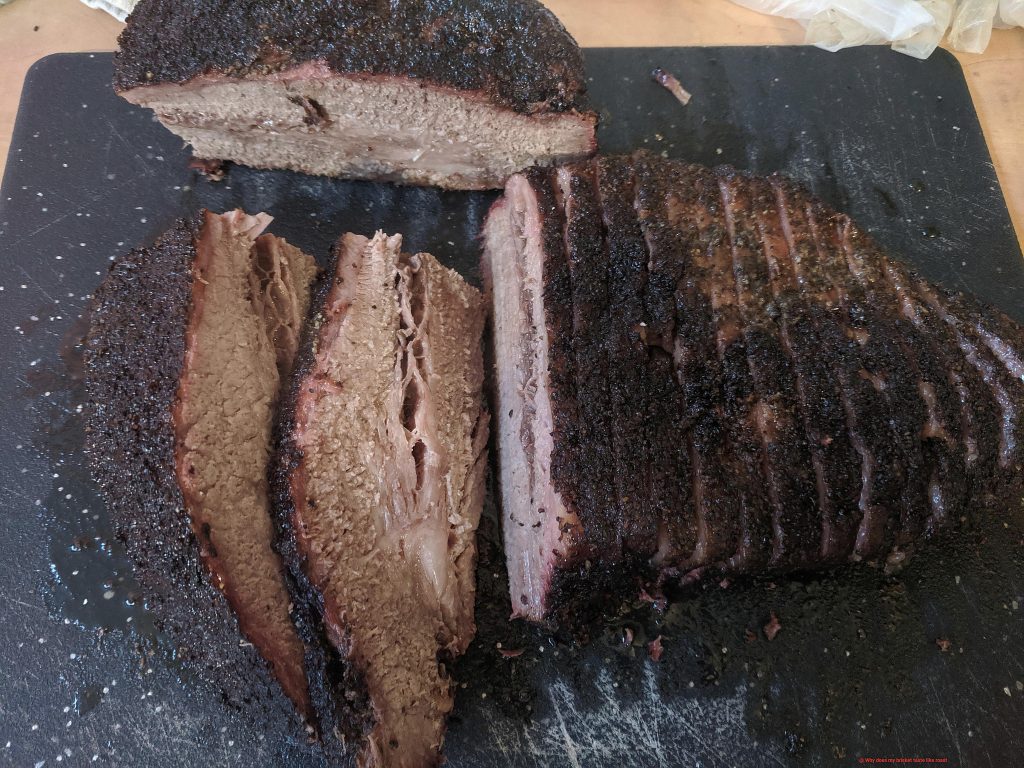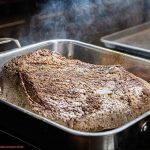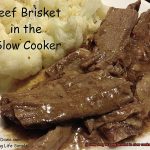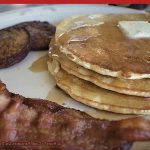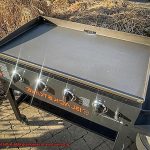Are you ever disappointed when your brisket tastes more like roast than the juicy and flavorful dish you were expecting?
Many home cooks have experienced this same issue.
But why does it happen? In this blog post, I’ll explain why your brisket will taste like roast and how to prevent it.
I’ll give all the tips and techniques for making a delicious brisket that won’t leave you disappointed. Let’s start with what makes a good brisket.
Brisket is a cut of beef from the cow’s chest or lower chest area. It’s usually tough and needs slow cooking to become tender and juicy.
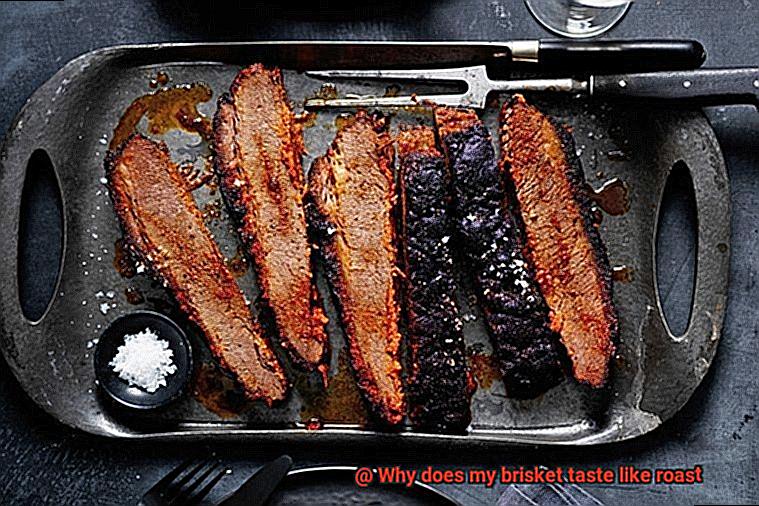
The key to success is in the technique: marinating with spices or herbs, plus using the right cooking time and temperature. If these steps aren’t followed, you may end up with dry, flavorless meat that tastes more like roast than brisket.
That’s because if it isn’t cooked long enough at low temperatures, it won’t have enough time to breakdown its tough fibers – leading to an unappealing texture and flavor. Plus, if the marinade doesn’t have enough fat or acidity (e.g., vinegar), it won’t help tenderize the meat – resulting in an unpleasant taste and texture similar to roast rather than a hearty brisket dish.
So, let’s get started.
Contents
Differences Between Brisket and Roast
Brisket and roast are two of the most popular cuts of beef, but they have distinct differences.
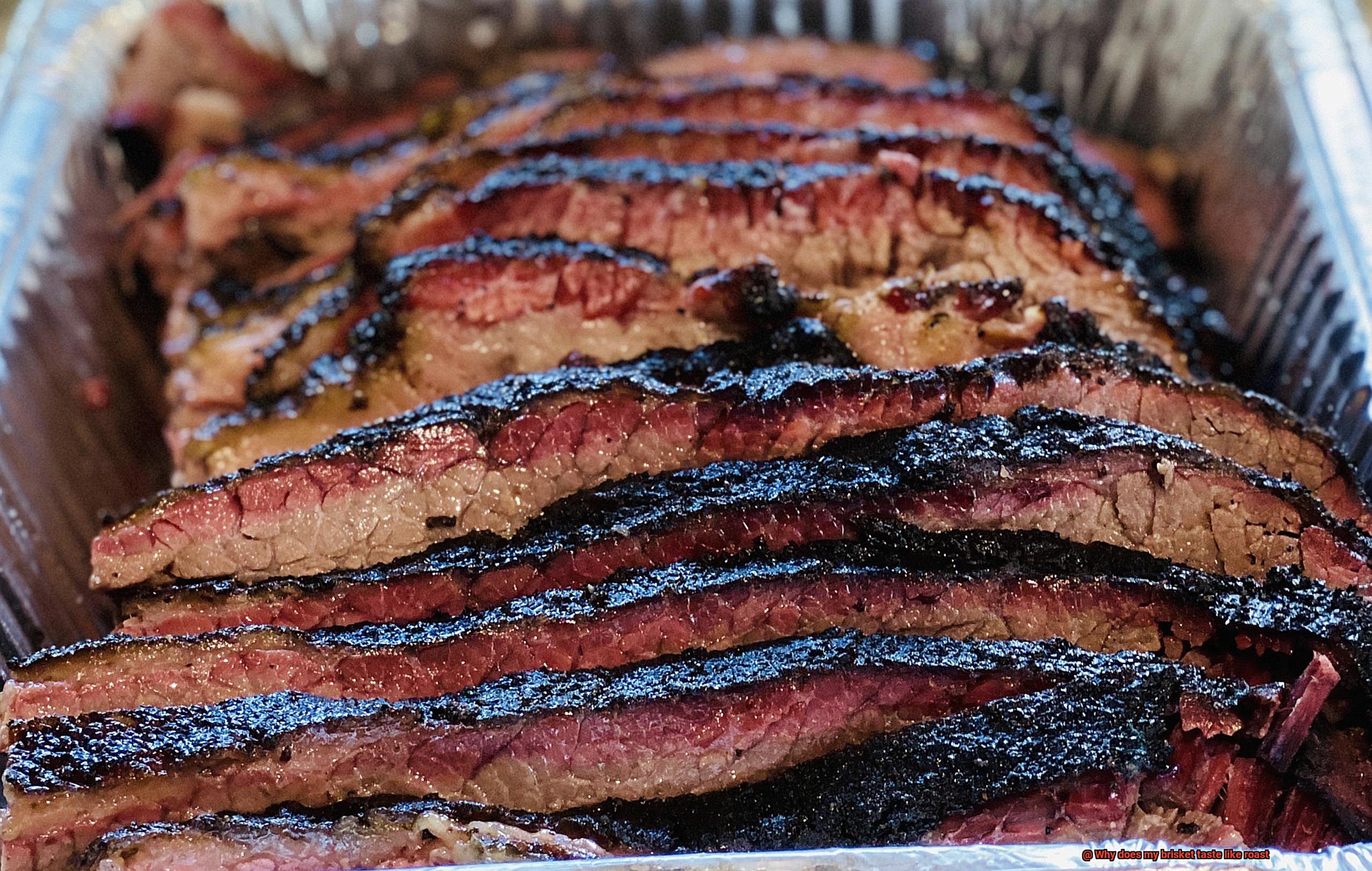
Brisket comes from the cow’s lower chest area and has a high percentage of intramuscular fat that must be slowly cooked at low temperatures for it to become tender and develop its rich, beefy flavor. Roast, on the other hand, is made from various parts of the cow and contains less fat.
It can be cooked at higher temperatures in less time and offers a milder flavor that can be more versatile when it comes to seasoning. In some recipes, brisket and roast can be used interchangeably, but only if you adjust the cooking time and temperature accordingly.
To ensure delicious results every time, make sure you choose the right cut for your dish and cooking method.
Reasons Why a Brisket May Taste Like Roast
Brisket and roast may seem like two sides of the same coin, but they’re actually quite different – brisket is the robust, slow-burning cowboy, while roast is the laid-back, friendly neighbor who’s always up for a good time.
If you’re wondering why your brisket tastes more like a roast than its own unique flavor, there could be several reasons. First off, it could be that the brisket wasn’t properly seasoned.
Roasts can often stand on their own without much seasoning, but briskets need generous seasoning to bring out their full flavor. Secondly, the temperature of the oven may have been too high.
Briskets must be cooked low and slow to develop their characteristic taste and tenderness; if it’s cooked at too high of a temperature, it’ll dry out and taste more like a roast. Overcooking can also cause a brisket to taste like a roast.
Lastly, some people might mistakenly refer to a brisket as a roast; although they are both cuts of beef, they require different cooking techniques to bring out their individual flavors.
Incorrect Cooking Techniques
Cooking a brisket is like taming a wild horse – it takes patience, experience, and the right techniques to ensure you get the desired flavor.
If you don’t take the time to season, cook at the right temperature, and use the correct cooking technique, your brisket will be more like a laid-back neighbor than a robust cowboy. Incorrect cooking techniques can be a major factor in making your brisket taste like roast.
Overcooking or undercooking at too high of a temperature can result in dry and tasteless meat that resembles a roast. To avoid this, it’s essential to keep the temperature consistent and low, around 225-250°F, to allow the meat to cook slowly and evenly.
Another mistake is not allowing enough time for the brisket to cook fully – it can take hours for it to reach perfection. To make sure your brisket is cooked through properly, use a meat thermometer to check its internal temperature; once it reaches 190-205°F, remove it from heat.
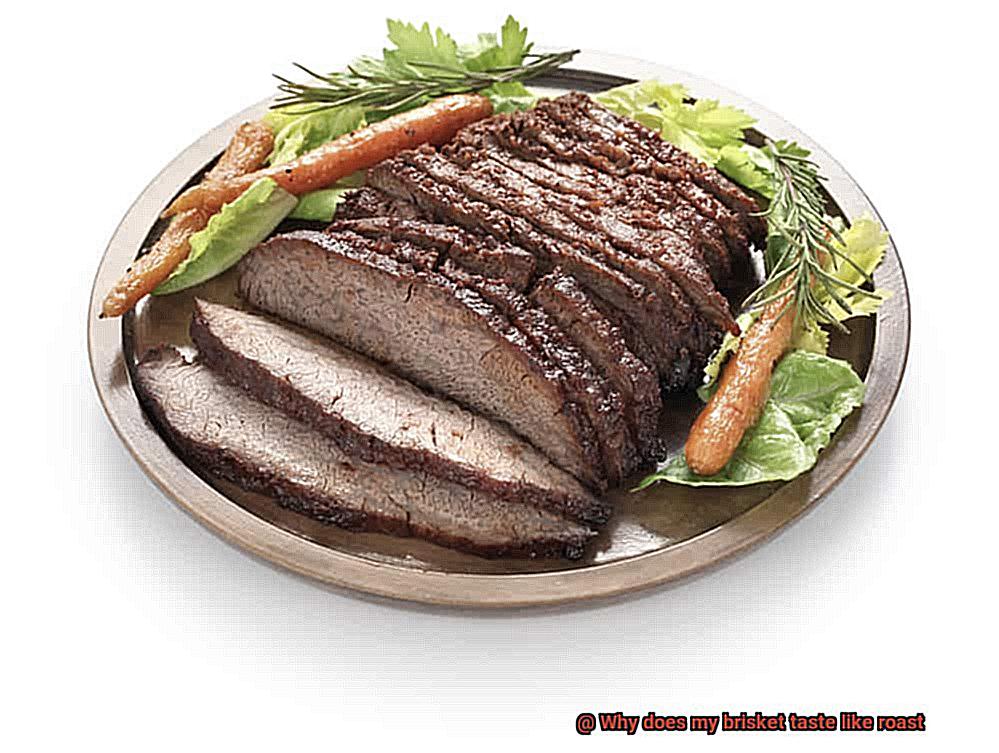
While roasts are typically cooked in an oven, briskets are best served using a smoker or slow cooker; this will ensure that they retain their flavor and juiciness rather than becoming dry and overcooked like a roast.
Quality of the Meat
When it comes to making a delicious, tender brisket, the quality of the meat you use is key.
Brisket consists of two muscles – the point and the flat – and both should have a generous marbling of fat for optimal flavor. For optimal taste, choose a brisket with a marbled fat cap and evenly distributed fat throughout the meat.
You can also opt for a dry-aged brisket to further enhance its flavor and tenderness. On the other hand, using a lower grade of meat will result in an unappealing roast-like taste that lacks flavor and can be both dry and tough.
Investing in high-quality meat will ensure you end up with a succulent, flavorful brisket that looks as good as it tastes.
Seasoning and Marinades
Seasoning and marinades are essential to creating a truly delicious brisket.
The key is to add just enough to enhance the meat’s natural flavor, without overpowering it. To ensure maximum penetration of the marinade, use a good quality meat injector and refrigerate the meat for at least 24 hours after marinating it.
Additionally, a light dusting of salt and pepper or herbs and spices before placing it on the smoker adds depth and complexity to the flavor. It is important not to rely too heavily on rubs and marinades, as this can mask the natural flavor of the meat.
Furthermore, overcooking the brisket can lead to a dry, rubbery texture and burnt, bitter taste that can easily be mistaken for roast. Therefore, it is important to monitor the temperature of the meat closely in order to avoid overcooking it.
Overcooking Brisket
Cooking a brisket is an art form, but if you get it wrong, you could end up with a dry, tough, and flavorless piece of meat.
To make sure your brisket turns out perfectly tender and juicy every time, here’s what you need to know about avoiding the common mistakes people make. The most important thing to remember is that brisket needs to be cooked low and slow.
People often try to rush the process by cooking it at too high of a temperature, resulting in a dry and unappetizing piece of meat. To ensure success, keep the heat low (around 225°F) and give your brisket plenty of time to cook.
Another mistake people make is relying on cooking times instead of checking the internal temperature of the meat. Brisket cooking times can vary depending on its size and thickness, so it’s essential to use a meat thermometer to check for doneness.
Wrapping your brisket in foil or butcher paper after a few hours will also help keep it moist and tender while still allowing smoke to penetrate deeply into the meat for maximum flavor.
Monitoring the Cooking Time and Temperature
Cooking brisket is a delicate art, requiring patience and precision.
To ensure that your hard work pays off, it’s essential to monitor the cooking time and temperature. If the temperature is too high or the cooking time is too long, the brisket will become dry and tough, resulting in a roast-like taste.
On the other hand, if the temperature is too low, it will lead to an uneven cook and lack of flavor. The key to success lies in using a meat thermometer to regularly check the internal temperature of the meat.
When it hits 195°F to 205°F, your brisket will be ready for serving. Don’t forget to periodically check on your brisket and make any necessary adjustments like adding wood chips or changing up the temperature.
8Er9Hdnd50Q” >
Conclusion
Achieving the perfect brisket requires patience and precision.
But with the right techniques, you can create a delectable dish that will tantalize your taste buds. To ensure optimal flavor penetration, marinate your meat in spices or herbs for maximum flavor penetration, use the right cooking time and temperature, and monitor the internal temperature of the meat using a thermometer.
Investing in high-quality brisket will also produce the best results.

